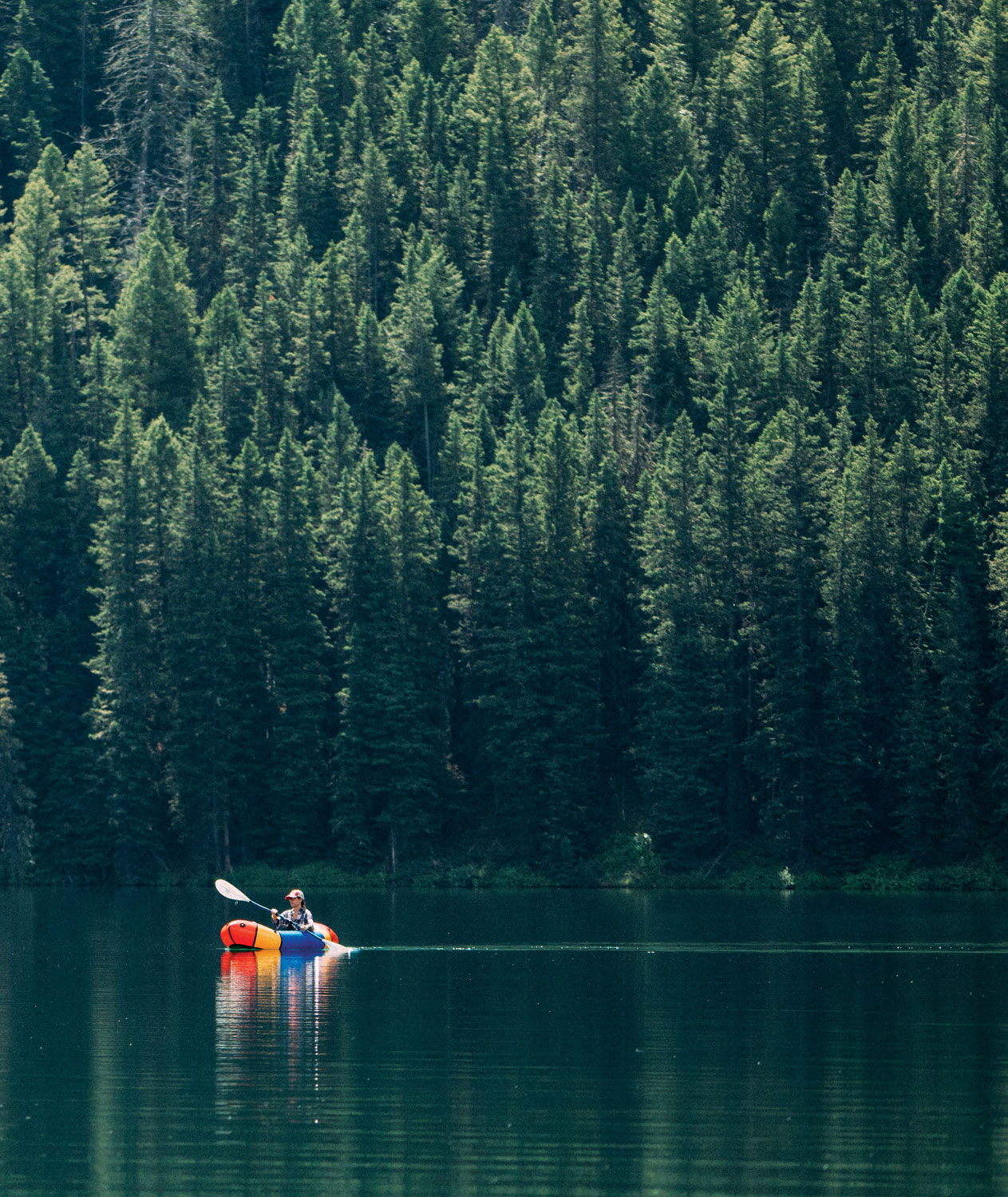
13 Feb PackRafting
In search of solitude
 The first time someone mentioned a packraft to me was about three years ago. “A pack what?” I said. Which is the response most fly fishers probably would have. I knew about drift boats, pontoons, canoes, and paddle boards, but I’d never heard of packrafts. Even though they have been around for decades, and more recently have been perfected into some pretty amazing watercrafts, they have never really caught on in the fly-fishing world.
The first time someone mentioned a packraft to me was about three years ago. “A pack what?” I said. Which is the response most fly fishers probably would have. I knew about drift boats, pontoons, canoes, and paddle boards, but I’d never heard of packrafts. Even though they have been around for decades, and more recently have been perfected into some pretty amazing watercrafts, they have never really caught on in the fly-fishing world.
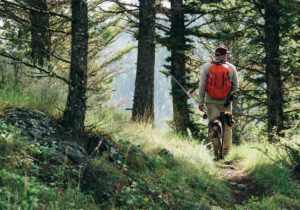 As the name implies, a packraft is a packable (on your back), lightweight, inflatable raft that can be rolled into the size of a sleeping bag. They come in many varieties and brands, built for different applications and uses. The hardcore whitewater models are capable of navigating Class-V rapids and weigh just under 10 pounds, while the ultralight models that weigh only 3 to 6 pounds can carry me, my 55-pound dog, and enough equipment to fish for the day. There are packrafts built for two, as well as cargo boats, in case you need to carry that moose after a river hunt (man, I sure would like to do that one day). For fishing, I mostly use the ultralight models and doubles: the Alpacka Raft Mule for me and my dog, and the Alpacka Raft Gnu when I want to carry more cargo or a two-legged friend.
As the name implies, a packraft is a packable (on your back), lightweight, inflatable raft that can be rolled into the size of a sleeping bag. They come in many varieties and brands, built for different applications and uses. The hardcore whitewater models are capable of navigating Class-V rapids and weigh just under 10 pounds, while the ultralight models that weigh only 3 to 6 pounds can carry me, my 55-pound dog, and enough equipment to fish for the day. There are packrafts built for two, as well as cargo boats, in case you need to carry that moose after a river hunt (man, I sure would like to do that one day). For fishing, I mostly use the ultralight models and doubles: the Alpacka Raft Mule for me and my dog, and the Alpacka Raft Gnu when I want to carry more cargo or a two-legged friend.
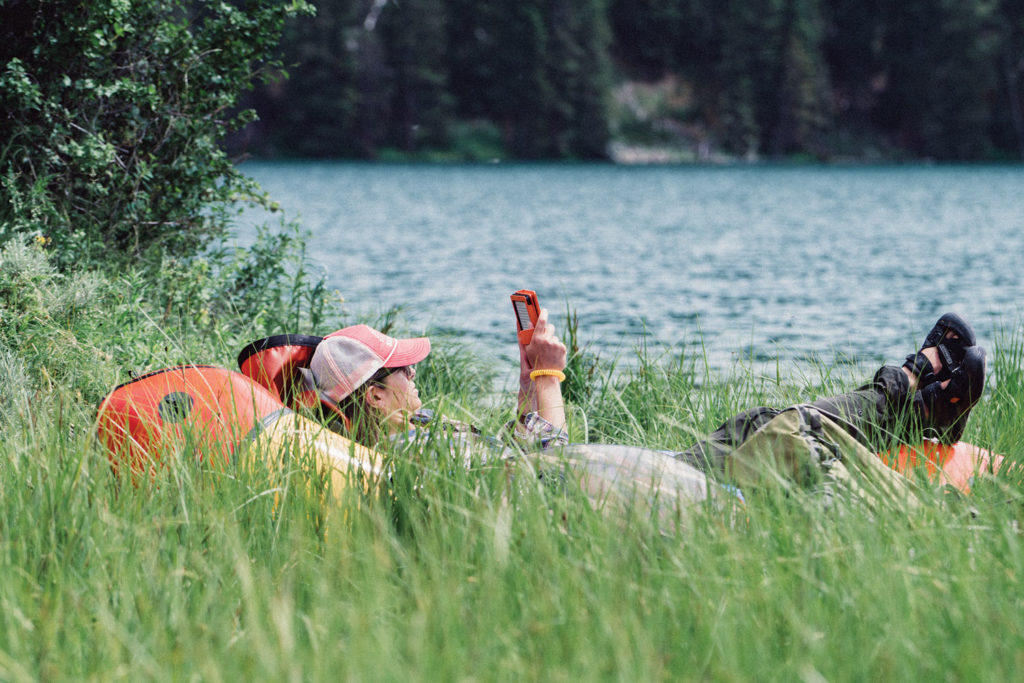
What is so special or different about a packraft versus any other craft?
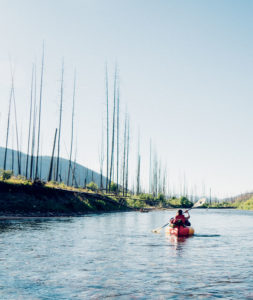
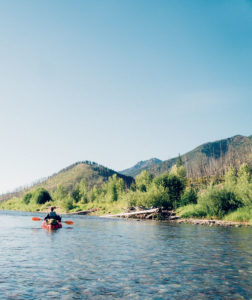 Packrafts allow me to fish off the beaten path. I’ve hiked with my raft to remote mountain lakes in search of big rainbow trout. I’ve packed one on my back for 25 miles and then floated 60 miles of rivers in the Bob Marshall Wilderness. Carrying a boat on my back to a body of water, loading it with my gear, and floating through the wilderness… it’s the ultimate freedom.
Packrafts allow me to fish off the beaten path. I’ve hiked with my raft to remote mountain lakes in search of big rainbow trout. I’ve packed one on my back for 25 miles and then floated 60 miles of rivers in the Bob Marshall Wilderness. Carrying a boat on my back to a body of water, loading it with my gear, and floating through the wilderness… it’s the ultimate freedom.
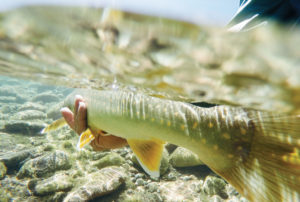 As an avid fisherman, photographer, and outdoorsman always in search of solitude, discovering packrafting was life-changing. In conjunction with camera equipment getting smaller, packrafts allow me to fish in remote places and photograph the adventures.
As an avid fisherman, photographer, and outdoorsman always in search of solitude, discovering packrafting was life-changing. In conjunction with camera equipment getting smaller, packrafts allow me to fish in remote places and photograph the adventures.
To me, experiencing wild nature is about checking out from the world. Many of us have created hectic existences, full of unnecessary distractions and comforts. I need to periodically remove myself to feel balanced, and there is something extraordinary about going back to the basics: eat, stay warm, sleep, and, of course, fish. It’s a simple life that allows me to reflect and slow down. And packrafting simplifies things even further; because you are carrying the extra weight of a boat, you learn to become a minimalist, to pack light.
 But packrafts are not only for hardcore backcountry travel. I’ve thrown them off bridges to float sections of rivers that are not navigable by bigger crafts. I’ve used them to cross rivers in popular walk-in areas in order to fish the opposite bank. I’ve floated rivers with unpassable water features, like waterfalls, walking around them with the boat under my arm.
But packrafts are not only for hardcore backcountry travel. I’ve thrown them off bridges to float sections of rivers that are not navigable by bigger crafts. I’ve used them to cross rivers in popular walk-in areas in order to fish the opposite bank. I’ve floated rivers with unpassable water features, like waterfalls, walking around them with the boat under my arm.
All in all, packrafts allow me to be creative and flexible in the outdoors, and still find that solitude that’s so important to me. It’s a way to fly fish the way I think it should be experienced: alone.




No Comments